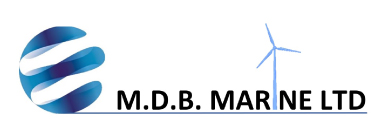Ultrasonic Inspection
Calibrated units offering accurate thickness readings
REALTIME READINGS
Ultrasonic Inspection
Ultrasonic inspection using ROVs offer several significant benefits, making them a valuable and efficient method for evaluating the thickness and integrity of underwater and offshore structures. Ultrasonic thickness inspections involve the use of high-frequency sound waves to measure the thickness of materials, providing crucial data for asset integrity assessment and maintenance planning. Here’s a detailed look at the benefits of ultrasonic thickness inspections using ROVs:
- Non-Destructive Testing (NDT): Ultrasonic thickness inspections are non-destructive, meaning they do not cause any damage to the materials being tested. This is especially important for critical assets, such as pipelines, offshore platforms, ship hulls, and storage tanks, where traditional destructive testing methods are not feasible or practical.
- Remote Access to Challenging Environments: ROVs equipped with ultrasonic sensors can access underwater or hard-to-reach areas with ease. They can navigate through confined spaces, complex structures, and deep-water locations, eliminating the need for human divers in potentially hazardous environments. This remote access enhances safety and allows for efficient inspections in challenging conditions.
- Real-Time Data Collection: ROVs provide real-time data during ultrasonic thickness inspections, allowing immediate assessment and decision-making. The operator can visualize the inspection results on the surface, facilitating prompt actions and reducing downtime. This real-time feedback ensures that critical issues can be identified and addressed promptly.
- Comprehensive Coverage: ROVs equipped with ultrasonic sensors can perform inspections on large surface areas, providing a comprehensive evaluation of material thickness across the entire inspection area. This extensive coverage ensures that potential defects or variations in material thickness are detected throughout the structure.
- High Accuracy and Precision: Ultrasonic thickness inspections are highly accurate and precise, providing precise measurements of material thickness. This level of accuracy is essential in evaluating the structural integrity of assets and determining the remaining lifespan of critical components.
- Detection of Corrosion and Erosion: Ultrasonic inspections can detect corrosion and erosion, which are common causes of material degradation in underwater and offshore environments. By identifying these issues early, operators can implement appropriate maintenance and corrosion prevention strategies, reducing the risk of structural failures.
- Assessing Structural Integrity: The thickness of materials directly affects the structural integrity of assets. Ultrasonic thickness inspections provide valuable data to assess the overall health of structures and identify areas that may require reinforcement or repairs.
- Versatility in Material Testing: Ultrasonic thickness inspections are versatile and applicable to various materials, including metals, composites, plastics, and concrete. ROVs equipped with ultrasonic sensors can assess the thickness of diverse materials used in underwater or offshore structures.
- Quantitative Data and Reporting: Ultrasonic thickness inspections provide quantitative data on material thickness, which is crucial for generating detailed inspection reports. These reports allow engineers and asset managers to make informed decisions regarding maintenance, repairs, or asset lifespan. The data can also be used for historical tracking and trend analysis.
- Cost-Effectiveness: Ultrasonic thickness inspections using ROVs offer cost-effective benefits by reducing the need for human divers and streamlining the inspection process. Early detection of thinning materials or potential defects allows for timely maintenance, preventing costly repairs or unplanned shutdowns.
- Preventive Maintenance: Regular ultrasonic thickness inspections using ROVs enable proactive maintenance. By identifying areas with reduced material thickness, operators can schedule maintenance and repair activities proactively, extending the lifespan of assets and optimizing maintenance costs.
- Environmental Monitoring: Some ROVs equipped with ultrasonic sensors can be integrated with environmental sensors to assess water quality and other environmental factors during inspections. This enables a holistic approach to monitoring, ensuring compliance with environmental regulations, and minimizing the impact on marine ecosystems.
In conclusion, ultrasonic thickness inspections using ROVs bring numerous advantages to underwater and offshore industries by providing non-destructive, accurate, and comprehensive evaluations of material thickness and integrity. The combination of ultrasonic technology with the remote access capabilities of ROVs enhances safety, efficiency, and data collection, enabling proactive maintenance, cost savings, and optimal performance of critical assets.
- Carried out by qualified NDT technicians
- Accurate measurements through coating
- We deliver excellent inspection accuracy & efficiency

